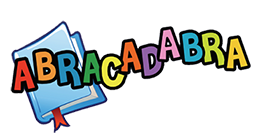Activities: Sounds, Letters, and Words (Alphabetics)
Same Phoneme
Overview
Objective
The student will be required to determine if phonemes (letter sounds) are the same or different.
Facilitation Tips
This activity can be done individually or in pairs. As well, it can be done as a whole class activity where students are asked to close their eyes and raise their hands when you call out two sounds and then ask "sounds the same" or "sounds different."
Levels
All letter sounds are presented in this activity.
Activity Insights
What is Same Phoneme?
Phonemic awareness prepares students for recognizing graphemes (the smallest units of writing symbols). Further reducing words into their simplest parts (phonemes) will help students understand the logic of the alphabetic principle. Presenting individual and blended phonemes help students identify common sounds in different words, for example cat, cut (/c/).
Why do students struggle with Same Phoneme?
Students may not be understand the sound that a letter makes or be able to identify the parts of a word.
How do I further support students?
Students may need to practice other skills such as rhyme matching, syllable counting, and word counting.
Linked Stories
This is a story-independent activity.
Related Activities
Rhyme Matching
Syllable Counting
Word Counting
Resources
This activity does not currently have any additional resources.
Activities: Sounds, Letters, and Words (Alphabetics)
Same Phoneme
Objective
The student will be required to determine if phonemes (letter sounds) are the same or different.
Facilitation Tips
This activity can be done individually or in pairs. As well, it can be done as a whole class activity where students are asked to close their eyes and raise their hands when you call out two sounds and then ask "sounds the same" or "sounds different."
Levels
All letter sounds are presented in this activity.
Insights
What is Same Phoneme?
Phonemic awareness prepares students for recognizing graphemes (the smallest units of writing symbols). Further reducing words into their simplest parts (phonemes) will help students understand the logic of the alphabetic principle. Presenting individual and blended phonemes help students identify common sounds in different words, for example cat, cut (/c/).
Why do students struggle with Same Phoneme?
Students may not be understand the sound that a letter makes or be able to identify the parts of a word.
How do I further support students?
Students may need to practice other skills such as rhyme matching, syllable counting, and word counting.
Linked Stories
This is a story-independent activity.
Related Activities
If you notice your student struggling with this activity, suggest one of the following activities to further practice and reinforce the skill.
Rhyme Matching
Syllable Counting
Word Counting
Resources
This activity does not currently have any additional resources.

